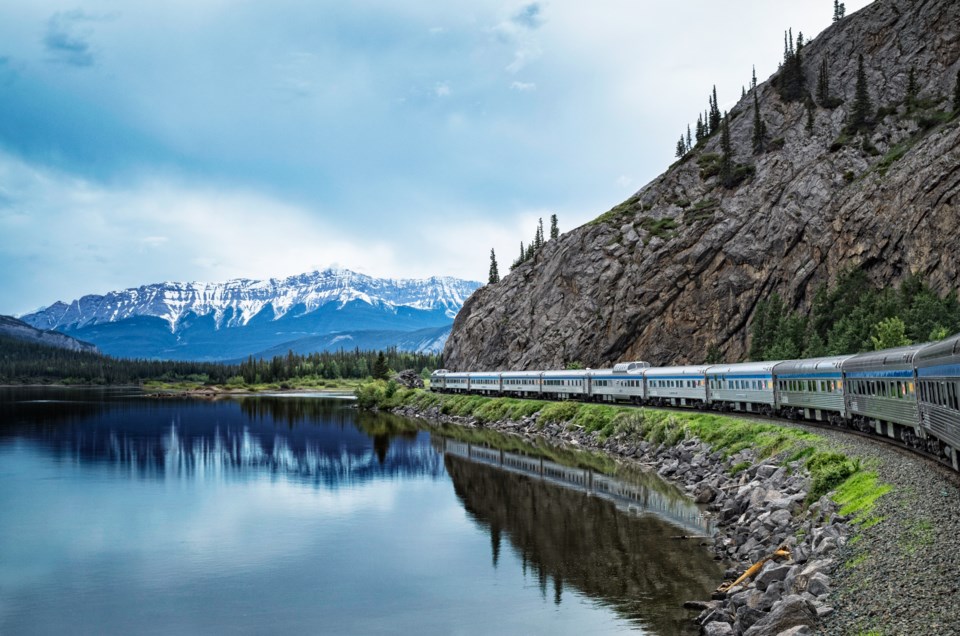With 210 aging railcars actively serving Canada-wide, Via Rail is calling on the federal government to start the process of procurement for new units immediately.
“The need to replace this fleet is critical, and the time to do so is now to assure continued service without interruption,” said Via Rail’s president and CEO Mario Péloquin in a statement.
Many of these railcars were built between 1946 and 1955, yet they serve a network of approximately more than 250 communities across the country spanning more than 10,000 kilometres, travelling an average 170,000 kilometres each year on average.
This doesn’t include the Québec City – Windsor Corridor, which sees the heaviest passenger train frequency in Canada and contributes two-thirds of Via’s revenue.
In 2018, the Government of Canada acquired 32 new locomotives and railcars for this service area. They are being progressively introduced to operations, and they are expected to be fully operational in 2025, according to Transport Canada.
“The Government of Canada recognizes the importance of passenger rail service beyond the Québec City – Windsor Corridor and will continue to work to ensure its sustainability,” stated Hicham Ayoun, senior communications advisor with Transport Canada, in an email to the Fitzhugh.
“Modernization of VIA Rail trains across the country is important to providing passenger rail services to Canadians, increasing tourism and strengthening links between rural communities and the rest of the country. Transport Canada continues to study options for improving the frequency and punctuality of rail service and reducing travel times in other regions of the country.”
In their lifespans, those 210 nationwide railcars have travelled around eight million kilometres at a minimum, according to a factsheet from the Crown corporation.
Replacing them is expected to cost several billion dollars.
Unless this immediate action is taken, Canada’s iconic national passenger rail service expects a significant and exponential service reduction. That would impact travellers from Vancouver through Jasper to Winnipeg, Toronto and Montreal.
It would have the greatest impact on remote and Indigenous communities such as Churchill, Man. where there are no roads for vehicle traffic. Passenger rail service is considered an essential service in these areas.
"The railway helped create Canada by connecting communities and playing a crucial role in the country's socio-economic development,” Péloquin said.
“Long-distance, regional and remote routes play this same role, serving as a vital link for remote and Indigenous communities, as well as contributing to tourism and regional economies.”
Beyond those who use the service regularly to commute or travel to larger centres for necessaries like medical appointments, Via Rail also serves a vital role in Canada’s tourism, showing travellers a side of the country that can’t be seen elsewhere.
Just as with any other form of motorized transport, railcars need regular maintenance. Long-distance railcars of this vintage, however, frequently need major repairs that often take longer to complete at Via's maintenance centre in Montreal.
Part of the reason for this is that many of their parts are obsolete, so they must be fabricated anew by the maintenance team each time. Reportedly, 25 railcars were taken out of service within the last few years.
Despite these maintenance efforts, the challenges continue. A significant reduction in services is to be expected unless new railcars are integrated as soon as possible. Otherwise, the possibility exists for the complete interruption of all services on Via’s long-distance, regional and remote routes in 2035.
Via’s press statement indicated that some trains could even be withdrawn from service earlier that that because “VIA Rail will never compromise on the safety of its passengers.”
While pre-procurement activities have begun and the actual procurement process could begin as soon as this year, it still takes around 10 years for new cars to enter service. That means time is of the essence, Via Rail said, and this year is a decisive year.
Via Rail is having “regular and fruitful conversations” with Transport Canada to ensure that passenger rail continues uninterrupted now and into the future.
“We need to be transparent and inform Canadians of the importance of 2024 to ensure the continuity of VIA Rail’s services across Canada in the coming decades,” Via’s press statement read.


